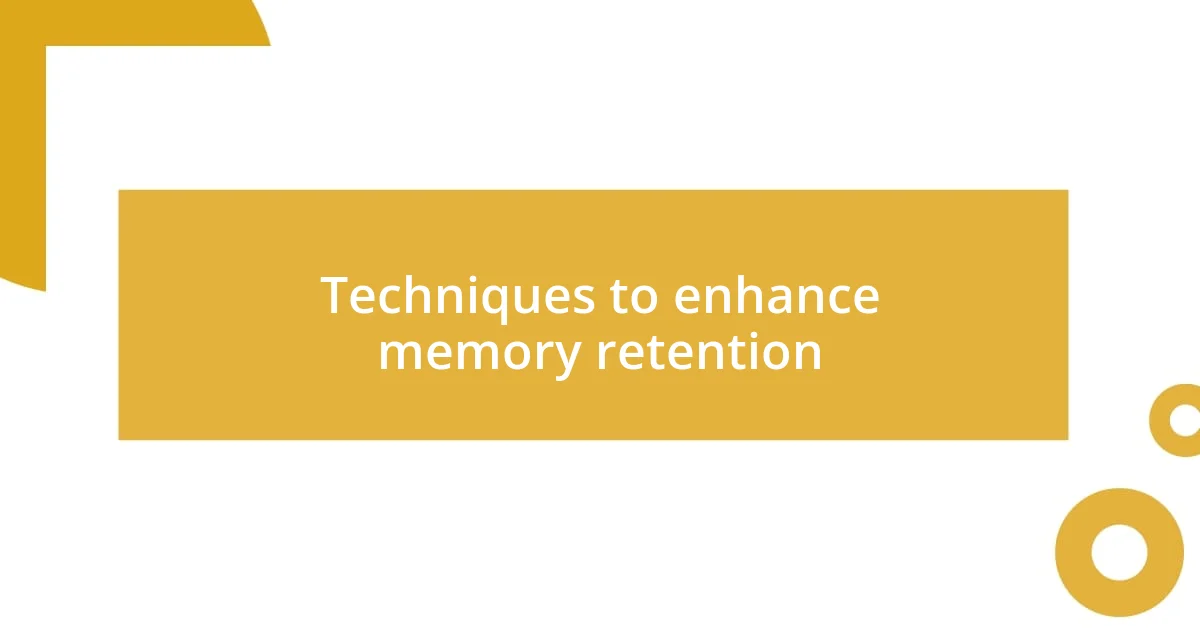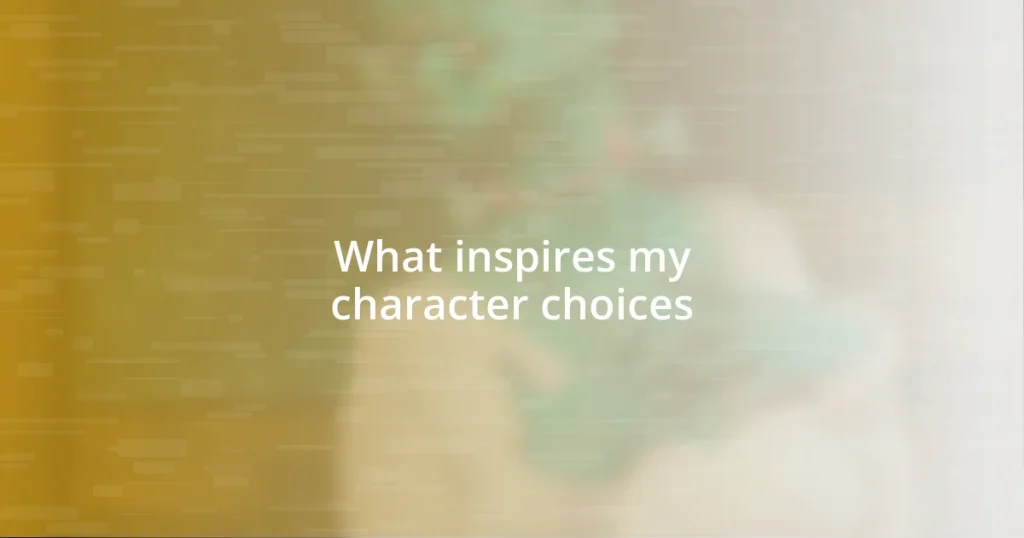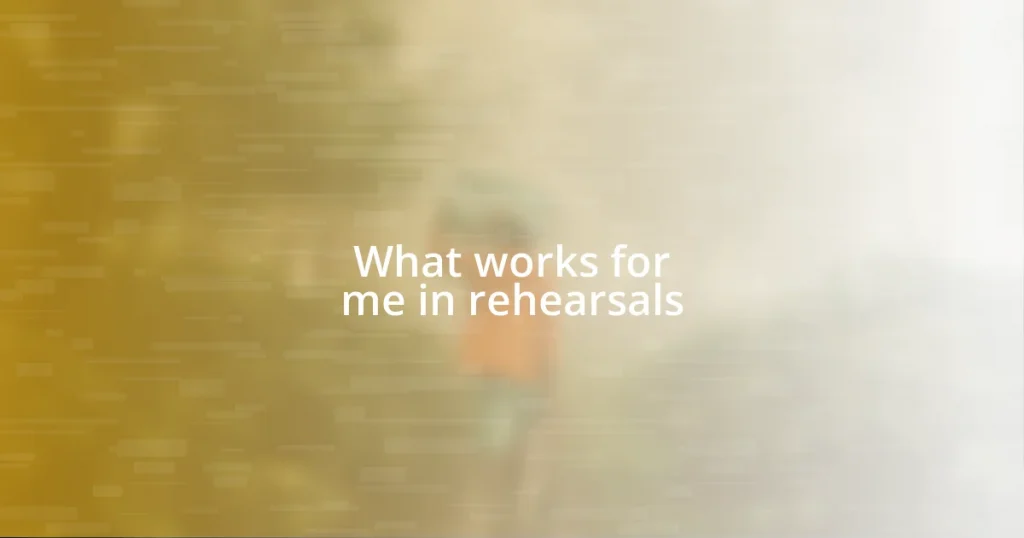Key takeaways:
- Memorization enhances communication, boosts confidence, and fosters creativity while strengthening cognitive abilities.
- Effective techniques for memory retention include visualization, chunking, repetition, and linking lines to personal experiences.
- Reviewing and testing, especially through random recall and bedtime reviews, significantly reinforces memorization and understanding.

Understanding the importance of memorization
Memorization is more than just a tool for actors and speakers; it’s a fundamental skill that enhances communication and boosts confidence. I remember the first time I had to deliver a speech without notes. The anxiety was palpable, but I realized that having the words ingrained in my mind allowed me to connect more deeply with my audience. Have you ever felt that rush of adrenaline when you know your material inside out? It’s electrifying!
Additionally, memorization cultivates mental discipline and strengthens cognitive abilities. I find that when I regularly practice memorizing lines or passages, my overall focus improves. Think about it: how often do you struggle to remember a name or a fact? Strengthening your memory not only makes information stick but also sharpens your mind for everyday challenges.
Moreover, the process of memorization often fosters creativity. For instance, while preparing for a role, I found that memorizing my lines also sparked new ideas about the character’s motivations. Isn’t it fascinating how knowing something thoroughly can unleash your creativity? It’s this interplay between memorization and imagination that can elevate our understanding of various concepts in profound ways.

Techniques to enhance memory retention
When looking to enhance memory retention, I’ve discovered a variety of techniques that can be incredibly effective. For me, the use of visual imagery has been a game changer. When I create vivid mental pictures associated with the lines I need to remember, it transforms abstract words into something tangible. Suddenly, I’m able to recall not just the lines but the emotions tied to them.
Here are some techniques that have worked well for me:
- Chunking: Breaking down longer texts into smaller, manageable sections makes them easier to recall.
- Repetition: I often repeat lines out loud; this auditory reinforcement really helps solidify them in my memory.
- Association: Linking phrases to personal experiences or familiar concepts provides a relatable context that makes recall smoother.
- Mind Maps: Visual brainstorming can help organize thoughts and make the information more memorable.
- Physical Movement: I’m a fan of memorizing lines while moving; incorporating physicality often helps with retention.
Another technique I’ve embraced is storytelling. When I weave the lines into a narrative, it creates a structure around them. Every character, emotion, or twist in the plot serves as a mental hook, allowing me to latch onto the words more naturally. I vividly remember rehearsing on my couch, combining my lines with a mock audience. It felt less like memorization and more like I was living the moment, amplifying both my retention and my emotional connection to the material.

Using visualization for memorizing lines
Using visualization as a technique to memorize lines has completely transformed the way I approach learning scripts. When I visualize a scene, I don’t just see the words on a page; I immerse myself in a vivid world where I can picture the settings and actions. I remember once preparing for a dramatic monologue; I imagined standing on stage, the lights dimming, and the audience holding their breath. This mental imagery helped cement the lines in my memory, allowing me to tap into the emotions of the scene effortlessly.
In practice, I’ve found that associating visual elements with the lines can create a powerful mnemonic device. For instance, when I needed to remember a particularly challenging passage, I visualized it as a colorful painting in my mind. Each word became a stroke, contributing to a larger masterpiece. This creative approach makes the memorization process more enjoyable and less daunting. Have you considered how framing your lines as part of a visual story could enhance your recall?
A particularly exciting element of visualizing lines is the connection it creates between memory and emotion. I’ve discovered that when I vividly imagine my character’s journey, the words resonate more strongly. Recently, while rehearsing a comedic role, I played out the silly scenarios in my mind, making the lines come alive with laughter. This playful visualization not only solidified my recall but also delivered a genuine performance. Isn’t it remarkable how engaging our imagination can lead to better memorization?
| Visualization Technique | Description |
|---|---|
| Mental Imagery | Creating vivid scenes in your mind that connect with the lines. |
| Associative Visualization | Linking lines to unique mental images or stories to aid recall. |
| Emotional Visualization | Imagining emotional scenarios to deepen connection with the lines. |

Practicing with repetition and rehearsal
Practicing with repetition and rehearsal has become a cornerstone of my memorization process. I remember an audition where I spent an entire afternoon reciting my lines over and over in front of a mirror. The simple act of hearing my own voice and watching my expressions helped me internalize not just the words but also the emotions behind them. Isn’t it fascinating how repetition can transform rote memorization into a fully embodied experience?
Rehearsal feels like a dance to me—one where each step brings comfort and familiarity. I’ve found it incredibly helpful to rehearse in varied environments, like at home and in the park. Each different setting introduces a unique energy, making the lines feel fresh and lively. Imagine stepping outside with your script and saying lines under the open sky. It’s invigorating! It reminds me of a time I practiced on a busy street, with passerby reactions adding an exhilarating layer to the performance.
There’s something immensely satisfying about feeling your memory tighten like a well-tuned string. The more I repeat the lines, the more they settle into my subconscious. I often incorporate elements like rhythm and melody into my rehearsals. I recall once turning a particularly tricky dialogue into a playful song, and it stuck with me for weeks. Have you ever discovered that facets of repetition can become an unexpected gateway to creativity and deeper understanding? It’s these little experiments that continually shape my approach to memorizing lines.

Incorporating mnemonic devices effectively
In my experience, incorporating mnemonic devices effectively hinges on creating meaningful connections that resonate personally. One time, I was struggling to remember a series of complex lines, so I crafted a catchy acronym using the first letter of each word. Not only did it simplify the overwhelming text, but it also made me chuckle every time I recited it. Have you tried transforming your lines into memorable words or phrases? This playful approach can lighten the memorization process.
Flashcards have also been a game-changer for me in this regard. Creating a flashcard for each line, with a visual representation or keyword on one side, helped solidify my recall. I remember making a flashcard with a picture of a sun for a line about brightness, and the next time I needed to recall that line, the image immediately popped into my mind. Isn’t it entertaining how something as simple as a little art can enhance our memory? These devices not only aid in memorization but also elevate our overall connection to the material.
I’ve found that using rhymes and rhythms can create a sort of melody around the lines, making them easier to remember. During a recent rehearsal, I found myself inadvertently singing my lines to a pop tune, and I was amazed at how quickly they stuck. It’s like turning memorization into a musical! Have you explored the possibility of turning your lines into a creative mantra? Engaging with the text this way can unlock new dimensions of understanding while effortlessly embedding the lines in your mind.

Reviewing and testing for reinforcement
Reviewing and testing for reinforcement is vital for solidifying what I’ve memorized. I often set aside time to quiz myself on the lines, sometimes even doing it in front of a friend. The thrill of getting it right or the slight panic of realizing I’ve forgotten something creates a kind of tension that propels me forward. Isn’t it interesting how a little pressure can actually motivate us to dig deeper into our memories?
One method I love is the “random recall” technique. I’ll cover my script and try to recite the lines in a different order. This challenges my brain, pushing me to make connections I might have overlooked. There was this one time when I struggled to piece together a monologue. By jumbling the order, I discovered a new layer of meaning in the words, almost like uncovering hidden treasures in my own performance. Have you ever tried mixing things up? It can genuinely transform your approach.
I also find that reviewing right before bed works wonders. I’ll take a few minutes to run through my lines one last time, allowing my brain to mull over them as I drift into sleep. It’s almost magical to wake up and find those lines more firmly established in my memory. There’s a unique peace in knowing I’ve given my mind the space to work on it subconsciously. This ritual has really enriched my memorization experience—why not blend a bit of relaxation with study?















